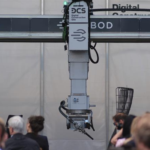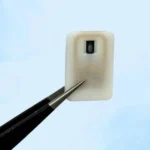Every Sunday, NFL fans see quarterbacks clutching their helmets, straining to hear play calls over the roar of stadium crowds. This challenge became a focus for Michigan State’s football program when the NCAA approved coach-to-player helmet communication for the 2024 season. Recognizing the potential noise issue for quarterbacks and linebackers, the team’s equipment manager, Andrew Kolpacki, sought a solution—one that would come from across campus.

A Collaborative Innovation
Kolpacki reached out to Dr. Tamara Reid Bush, a mechanical engineering professor and head of the Biomechanical Design Research Laboratory. Armed with photos showing how other teams used duct tape to block out sound, he asked if Michigan State could do better.
“Oh, absolutely,” Bush replied. Partnering with Rylie DuBois, a sophomore biosystems engineering major and research assistant, the team set out to develop custom 3D-printed earhole inserts for the helmets.
Using polylactic acid, a bio-based plastic, and accounting for variations in helmet designs, Bush and DuBois created inserts tailored to each player’s gear. The inserts debuted in Michigan State’s home opener against Florida Atlantic, helping players like quarterback Aidan Chiles and linebacker Jordan Turner communicate more effectively during the game.

DuBois, watching from the student section, said, “I felt such a strong sense of accomplishment and pride. I told all my friends around me about how I designed what they were wearing on the field.”
Scaling Production for the Spartans
To meet the team’s needs, the duo produced approximately 180 sets of inserts in various sizes and colors. As the season progressed, they continued to refine their designs, ensuring optimal performance for Spartan players in diverse game environments.

The effectiveness of these inserts became evident during high-stakes matchups, including games at Michigan Stadium, with over 110,000 fans, and Oregon’s Autzen Stadium, where 60,000 attendees created a deafening atmosphere.
Kolpacki noted, “It can be just deafening. That’s what those fans are there for—to create havoc and make it difficult for coaches to get a play call off.”
The inserts gave the Spartans a crucial edge. While linebacker Jordan Turner preferred inserts in both earholes, Chiles opted for one to maintain some outward sound awareness. “It’s all about tailoring the equipment to what works best for each player,” Kolpacki added.

A Growing Trend in Football
Michigan State’s approach is part of a broader trend in college and professional football. Many programs are adopting 3D-printed solutions for helmet inserts, including products from XO Armor Technologies, an Auburn-based company specializing in athletic wearables. XO Armor initially developed inserts for the Houston Texans and has since supplied approximately 60 college and NFL teams with sound-deadening earhole covers.
Jeff Klosterman, XO Armor’s vice president of business development, described the unexpected demand: “We kind of just did this as a one-off favor to the Texans and honestly didn’t forecast it becoming our viral moment in college football.”
Innovation Meets Real-World Impact
Dr. Bush described the project as a “win-win-win” for players, students, and engineering professionals. For DuBois and her peers, the opportunity to apply classroom knowledge to a real-world solution has been invaluable. “It’s exciting to develop and design something and see it being used and executed,” Bush said.
By combining engineering expertise with the latest 3D printing technology, Michigan State is helping its players overcome one of football’s biggest challenges: communicating in the chaos of game day. The innovative inserts stand as a testament to the power of cross-disciplinary collaboration and practical problem-solving.
Source: seattletimes.com










